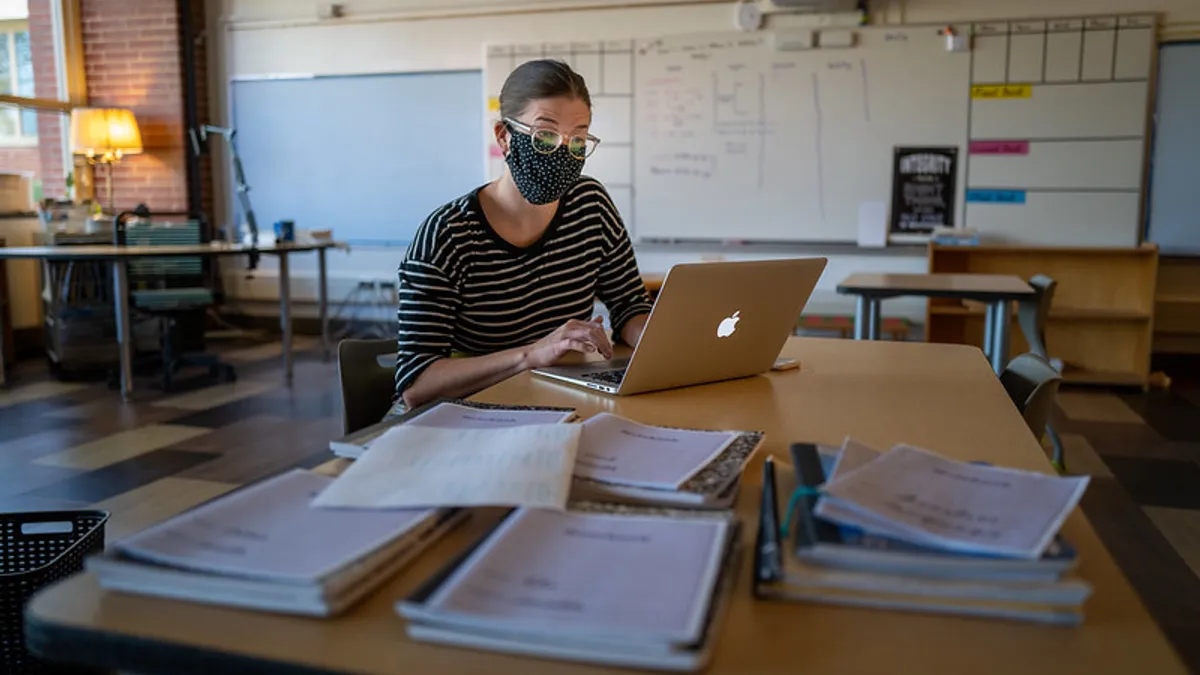Dive Brief:
- Teacher shortages were a problem prior to the pandemic, but the issue has grown worse during the COVID-19 pandemic and threatens to jeopardize districts’ ability to reopen safely in California, according to a report from Learning Policy Institute that focuses on supply and demand, increasing resignations, retirements, turnovers and vacancies, and the number of new teachers entering the workforce.
- The results show shortages in smaller rural districts are more severe, especially in math and science, and the shift back to in-person learning with smaller class sizes will further stretch the workforce. Workload and burnout are cited as concerns, as are increasing numbers of retirements and resignations.
- The problem is exacerbated in the pipeline by teacher license testing policies and inadequate financial aid to complete preparation programs. The report suggests building high-retention pathways into education through teacher residency, which makes the profession more affordable and attainable, citing California’s Golden State Teacher Grant Program as an example of financial supports that help recruit and retain new teachers in high-need areas and subjects.
Dive Insight:
While the Learning Policy Institute report is based on California data, teacher shortages are a national concern. Concerns related to the COVID-19 pandemic and the challenges of remote learning have further complicated the profession and threaten to worsen the problem.
The drop in New Orleans' teacher workforce following Hurricane Katrina 15 years ago provides historical perspective of what may be to come. After the storm, for example, the Orleans Parish School Board laid off its teachers for four months. Only half returned by fall of 2007, only one-third went back to New Orleans schools, and another 18% found jobs in other Louisiana districts. By 2013, the number of pre-Katrina teachers had dropped 22%.
In the wake of the pandemic, there is a concern veteran teachers nearing retirement age may not opt to return to the classroom. According to the National Center for Education Statistics, 29.2% of teachers are 50 or older.
Since 2012, teacher demand has outpaced supply, and that gap grew to more than 110,000 in the 2017-18 school year, up from a 20,000-teacher deficit in 2012-13, according to the Economic Policy Institute.
The American Institutes for Research recommends education stakeholders reconsider how they manage teacher staffing. The virtual learning environment is giving educators the opportunity to expand their professional skill sets. When schools were forced last spring to shift to virtual environments, teachers were thrown into new roles as mentors and coaches, curriculum designers and technology experts.
This idea reflects a differentiated school staffing approach that structures experienced teacher leaders into teams in the same subject or grade. The multi-classroom leaders would then use data that helps teachers prepare lessons, evaluate progress and tweak systems when necessary.













